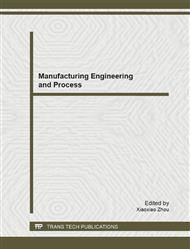p.434
p.440
p.447
p.453
p.458
p.463
p.468
p.477
p.484
Performance and Emission Analysis of C.I.Engine with Kapok Methyl Ester and its Blends
Abstract:
Current demands on renewable alternative fuel, biodiesel claims considerable significance. Biodiesel can be produced from any type of vegetable oils but yielding is determined by its free fatty acid (FFA) content. The alkaline-catalyzed esterification is not suitable for the unrefined vegetable oil which has high acid content. Hence, two-step esterification process is used to derive the kapok methyl ester due to its high FFA value. The biodiesel production in the two step process consists of acid-catalyzed pretreatment followed by an alkaline-catalyzed transesterificatin. In this study, experimental investigations are carried out in compression ignition engine to analyze the properties, performance and emissions characteristics of different blends of kapok methyl ester and compared with diesel. The exhaust gas temperature and specific fuel consumption are increased with increase of load and amount of biodiesel. The CO2 emission is slightly higher and NOx emission is about 22 percentage higher than that of the diesel at all the loads of engine. However, lower biodiesel blends showed reasonable efficiencies, lower value of smoke, CO and HC emissions.
Info:
Periodical:
Pages:
458-462
Citation:
Online since:
April 2012
Authors:
Price:
Сopyright:
© 2012 Trans Tech Publications Ltd. All Rights Reserved
Share:
Citation:


